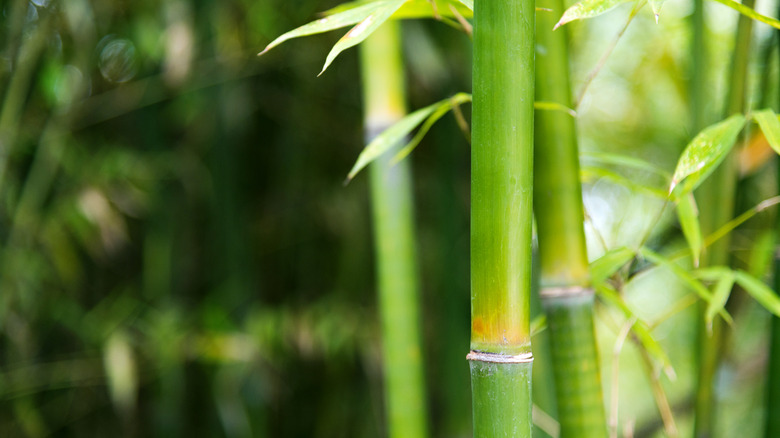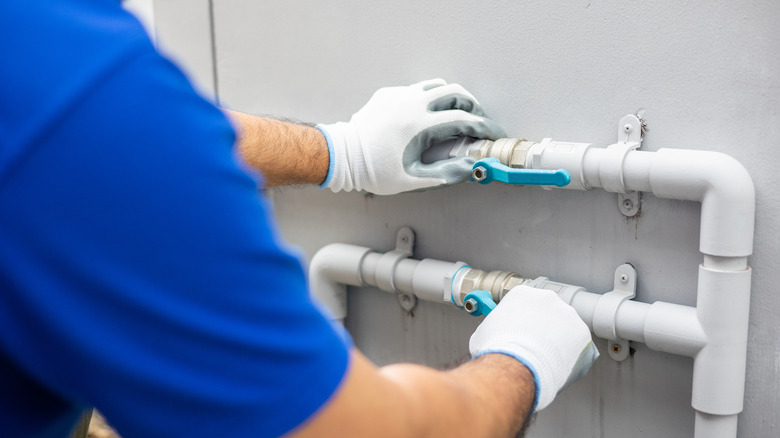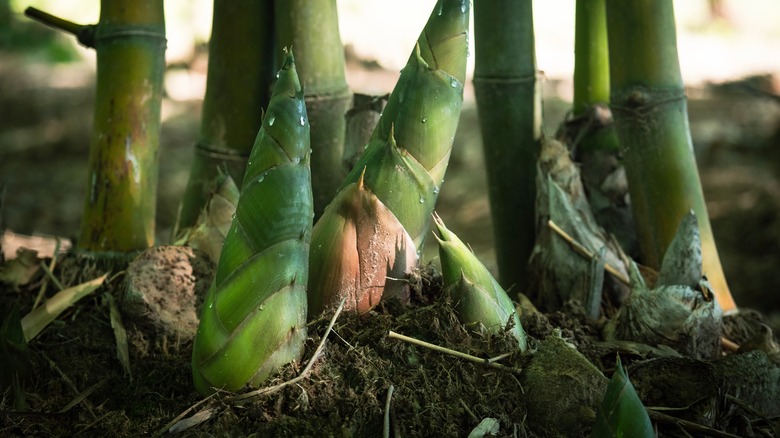Why Planting Bamboo Near Your Home Can Cause Serious Damage
It's almost scandalous if you don't go through a bamboo obsession phase. Beyond being one of the prettiest houseplants money can buy, it can grow dozens of feet tall depending on the type, truly making it the star of any show. Though most bamboo plants can tolerate indoor conditions, they have a natural preference for the outdoors. And, sadly, this can result in many of your other plants — and your home — experiencing a series of very unfortunate events.
Native to almost every continent except Europe, bamboo is resilient, and its roots as a noxious, invasive weed mean it can grow in almost any circumstance. Because it grows so quickly and so aggressively, many homeowners run into countless issues. The plants can grow their way under homes and into cracks and crevices, eventually damaging plumbing and flooring. This happens because bamboos have rhizomes — underground stems that grow horizontally and can create new shoots. These stems can extend undetected for up to 20 feet. Usually, if the bamboo isn't satisfied with its soil placement, it will run, and it'll do so with force. So you can see how planting these plants right next to your home or near an important landmark can cause huge issues.
Floor and plumbing damage caused by bamboo
For those of us who can't guarantee an extremely solid foundation or live in a bordering neighborhood where others may not have the best maintenance schedules, it's best to leave bamboo out of your home garden. First things first, take note of what your bordering neighbors are growing. Like one Reddit user notes, a small 2-foot by 15-foot patch from their neighbor's garden quickly turned into hundreds of bamboo canes all across their yard that prohibited their own plants from growing. Taking note of who has bamboo nearby can save you a lot of issues in the future. Though most species are not classified as invasive plants, local laws vary by state — Golden bamboo, for example, is classified as invasive in Maryland, Pennsylvania, West Virginia, Virginia, and Georgia. Check with your housing committee or city council to ensure you are not responsible for future issues caused by your neighbor's decision.
But what happens if it's already infected your home? If there are bouts of bamboo hanging around your yard, common floor and plumbing damage can seem invisible until it begins to grow through the cracks of your outdoor structures and retaining walls. Even sprinkler systems, sewage lines, and pipes are unsafe. Though most sewage pipelines are nowadays built deeper than 24 inches, the fibrous roots of bamboo burrow about 2 feet into the ground and disturb the pipe's natural flow. At this point, the best thing to do is call an expert. Bamboo removal is possible, but it can be an expensive process that shouldn't be taken lightly. Without proper excavation, the bamboo will continue to burrow and bury you deeper into property damage debt.
How to contain bamboo in your garden
If you're still up for the challenge of growing and caring for bamboo in your home garden, you need to know the difference between running bamboo and clumping bamboo before you buy any. Running bamboo, like its name, can shoot up to 40 feet per season, surely taking over a property in no time. Clumping bamboo is pretty great at staying self-contained. But though the threat of invasion is significantly lower, be wary that it still can spread in rare circumstances.
Clumping bamboo is definitely the better choice because its rhizomatous structure is shorter, ultimately ensuring that the clumps grow as new bamboo plants grow rather than completely on their own. Full maturity for a clump is only about 2 to 10 feet wide. If your space permits that amount of space, this is the best option.
Installing a bamboo area is a great idea, too. Usually, if bamboo can't penetrate a region, it'll alter its route and find a different way to spread. So, as we mentioned before, a weak or cracked foundation isn't ideal for this space — a newer home is a better bet. If you want to avoid havoc caused by traveling bamboo, make sure you don't have any breaches in your barrier . This means making sure your sidewalk, driveway, patio foundations, and even cracks in sheds or garages are properly sealed and maintained while growing bamboo.


